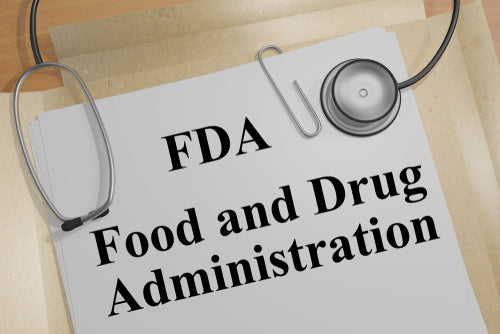Synthetic Nicotine vs Natural Nicotine: What You Need To Know
Estimated 0 min read
Synthetic nicotine has been around since 2016, but its popularity has been recently rising. In this blog, we answer why it differs from natural or tobacco-derived nicotine, its advantages and disadvantages, and much more. So if you’re ready, let’s get started.
Table of Contents
- What is Synthetic Nicotine?
- Regulations Impacting Non-Tobacco Nicotine Products
- Production Costs
- What the Future Holds for This Type of Products
- Products We Offer With Synthetic Nicotine
- Conclusion
What is Synthetic Nicotine?
Synthetic nicotine is the nicotine that is made in a lab and does not contain tobacco. It has the same chemical structure (C10 H14 N2 or ten carbon atoms, 14 hydrogen atoms, and two nitrogen atoms) as nicotine derived from tobacco. It is made to mimic the same effects, both good and bad, of natural nicotine.
Tobacco-derived nicotine extracts through a rigorous process where chemicals, solvents, and extractions get the nicotine compound from the tobacco plant, synthetic or non-tobacco nicotine. On the other hand, it is made in a laboratory where no organic material (aka tobacco) is used. The significant advantage that synthetic nicotine has over nicotine derived from tobacco is that it has zero impurities and can be scaled without the needs of farms, crops, or the extraction processes.
Currently, there are two major players in the synthetic nicotine business Next-Gen Labs and CNT. Both offer two different types of synthetic nicotine. Next-Gen Labs offers what they called and has patented “Tobacco Free Nicotine” based on the R+S isomer combination alongside another kind of nicotine, more advanced, found in the S isomer. CNT offers exclusively the more advanced S isomer combination, which no one has patented yet.
These two types of synthetic nicotine are the most popular and used with vaping products today.
The Difference Between R+S Isomer Combination Synthetic Nicotine and S Isomer Synthetic Nicotine
When a nicotine molecule is created, you get two stereoisomers that are identical to each other. In natural nicotine or nicotine derived from tobacco, the most prevalent of these isomers is the S isomer, which creates the physiological effect people experience when consuming nicotine. However, the R isomer is also found in the nicotine derived from tobacco but found at much lower levels. Researchers believe it to have no effects on the body.
The main difference between R+S isomer combination synthetic nicotine and S isomer synthetic nicotine is potency. With the S isomer being up to 2x times more potent than the R+S isomer combination synthetic nicotine.
Regulations Impacting Synthetic Nicotine Products

There are currently no regulations, at least on the federal level, regarding synthetic nicotine. This is because there is no formal mention prohibiting the use of non-tobacco products in the Tobacco Control Act. The Act only states that "any product made or derived from tobacco and intended for human consumption, including any component, part, or accessory of a tobacco product." is considered a tobacco product.
Since the Tobacco Control Act is the act that created the definition of a tobacco product, any vaping product that uses synthetic nicotine would not fall in the scope of the definition, which would ultimately mean they technically would not have to submit PMTAs. This is why we believe its popularity has risen and why many companies have been attracted to it. It offers a solution to the PMTA regulations.
However, regulations for synthetic nicotine are expected to occur once it becomes more readily available. And the Food and Drug Administration is already aware of its existence. On the FDA website, we can find a FAQ that states the following regarding synthetic nicotine:
“The product I manufacture contains no substance made or derived from tobacco, e.g., is zero-nicotine, or has synthetic nicotine or nicotine made from tomatoes. Is my product subject to FDA regulation?"
The definition of "tobacco product" includes any product made or derived from tobacco, including any component, part, or accessory of a tobacco product. E-liquids that do not contain nicotine or other substances made or derived from tobacco may still be components or parts and, therefore, subject to FDA's tobacco control authorities.
However, the FDA might not want to regulate a disposable, closed system device containing an e-liquid with truly zero nicotine (or synthetic nicotine) as a tobacco product if it is not intended or reasonably expected to be used in a fashion. FDA wants to make these determinations on a case-by-case basis, based on a totality of the circumstances.”
Production Costs

According to DIYorDIE, synthetic nicotine is not more commonly used because its production costs are much higher than that of nicotine derived from tobacco. The price comparison is rather steep, with one liter of 100mg of natural nicotine, which creates “18,000ml of 6mg e-liquid”, costing $100 to consumers, while the same one liter of 100mg of synthetic nicotine costs around $259.99. And this is for R+S isomer combination synthetic nicotine, which means that you would need twice the amount to be as potent as regular nicotine.
What the Future Holds for These Type of Products
The future of synthetic nicotine lies in the FDA’s hands, which will most likely regulate it in some shape or form if past events have shown. According to Vaping360, there is already an active bill in the Senate to regulate synthetic nicotine. If the bill fails, Congress could alter the Tobacco Control Act’s definition to include nicotine from any source (including synthetic nicotine in the definition). If synthetic nicotine is not regulated at the federal level, it will go down to states and how they wish to control it.
Products We Offer With Synthetic Nicotine
At the moment, we carry three brands that use synthetic nicotine. These are Ripe Vapes E-liquids, BlueBar TFN Disposables, and Haven Synthetic Disposable Devices.
Ripe Vapes E-Liquids
With a line-up of both vape juices and nicotine salts, Ripe Vapes uses synthetic nicotine to offer a less potent but more flavorful vapers option. Since their recipe for both nic salts and e-juices contains synthetic nicotine, it’s less powerful and perfect for people trying to quit nicotine by lowering their nicotine intake level.
BlueBar TFN Disposables
BlueBar is a new company from South Florida. They carry ten flavors of delicious fruit blends that all use tobacco-free-nicotine (TFN) or a synthetic nicotine. All their devices are draw-activated and contain 50mg of tobacco-free-nicotine nic salts or 25mg of regular nic salts. If you ask us, these disposables are perfect for new vapers who found the nicotine level of regular disposables too high.
Haven Synthetic Disposable Devices
With five flavors that range from Coffee to Grape Freez, Haven Synthetic Disposables, are making a splash in the world of vaping with their synthetic nicotine devices. With 5% synthetic nicotine nic salts, or 50mg, they offer what tobacco-derived nicotine can never provide, a less intense nicotine experience for those that enjoy disposables with moderation.
Monster Bars XL Vape
Discover the ultimate vaping upgrade with Monster Bars XL Synthetic Nicotine Disposable Vape Pen. This 10-pack features 50MG (5.0%) Synthetic Nicotine, offering a smooth vaping experience. Each pen contains 7ml of pre-filled e-liquid, providing approximately 3500 puffs. Powered by a 1200mAh integrated battery, it ensures lasting satisfaction. With its disposable design and draw-activated firing mechanism, vaping has never been easier. Elevate your vaping game with Monster Bars XL for unparalleled convenience and enjoyment.
Frequently Asked Questions
What Vapes Use Synthetic Nicotine?
Many disposables, nicotine salts, and vape juices use synthetic or tobacco-free nicotine. Currently, in the VapeRanger store, you can find 1061 TFN vape products from various brands, so many vape products use synthetic nicotine.
Is Synthetic Nicotine Safer Than Regular Nicotine?
We can’t say for sure that synthetic nicotine is safer than regular nicotine. There haven’t been enough studies done on the subject to give a definite answer. However, manufacturers of this type of nicotine claim that synthetic nicotine is purer. Natural nicotine will always have impurities, but synthetic nicotine (according to its manufacturers) can reach purity levels higher than 99%.
Does Synthetic Nicotine Have Side Effects?
Currently, no studies state that synthetic nicotine has side effects other than the same side effects caused by natural nicotine. Furthermore, since they have the same chemical composition, they behave and act exactly the same on the human body.
Is Synthetic Nicotine Regulated?
When we wrote this blog, the government did not regulate synthetic nicotine. However, on April 14, 2022, a new law passed that gave the FDA regulatory power over all synthetic and tobacco-free nicotine products. Therefore, from April 14, 2022, onward, all synthetic nicotine products must meet the requirements stated in the Federal Food, Drug, and Cosmetic Act (FD&C Act).
Conclusion
Synthetic nicotine could pave the way for the future, at least for small vaping companies who might be able to receive authorization from the FDA if they create disposables with synthetic nicotine. For now, according to the FAQ above, they will review and make determinations on a “case-by-case” basis only for disposables that use synthetic nicotine.







